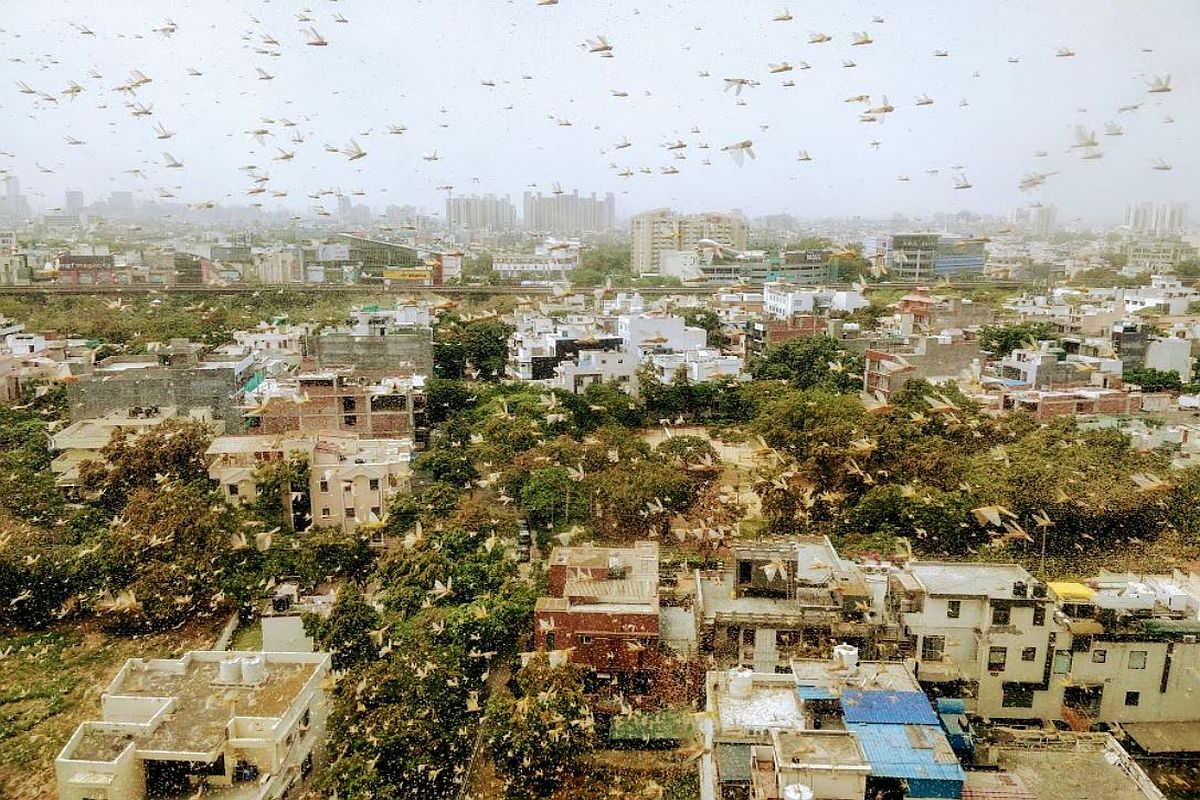Drunk riders fall off flyover in Delhi
A tragic accident occurred on Geeta Colony flyover, resulting in one fatality and another person sustaining serious injuries, police said on Sunday.
After the meeting, the Delhi government will issue an advisory to deal with the emerging situation.

Locusts seen in Gurugram. (Photo: Twitter | @joybhattacharj)
Raising concerns in the Delhi-NCR region, swarms of locusts were reported in several parts of Gurugram district on Saturday.
Locusts were seen in Rajendra Park of sector 5, Surqt Nagar, Dhanwapur, Palam Vihar, Maruti factory in sector 18, Sector 17 DLF phase 1 and many other places in old and new Gurugram.
Advertisement
Residents of Gurugram were surprised due to the sudden attack of locusts around 11 am.
Advertisement
However, district administration has claimed that it had issued guidelines for residents, urging them to stay indoors and make noises to ward them off.
Residents used mikes, and loud speakers to keep locusts away from their homes.
Gurugram district administration is assessing the damage due to the locusts attack
The locusts, however, crossed the city in one hour and headed towards South Delhi.
In the wake of locust attack in Gurugram, Delhi Environment Minister Gopal Rai on Saturday called an emergency meeting to discuss the situation.
After the meeting, the Delhi government will issue an advisory to deal with the emerging situation.
The minister also directed the administration to be alert and asked officials of the Agriculture department to make field visits in areas close to Gurugram.
The development secretary, divisional commissioner, director, Agriculture department, and the district magistrates of South Delhi and West Delhi will attend the meeting, as per reports.
The Union Ministry of Agriculture and Farmers Welfare, in a statement on Monday, said that the locust control operation is in full swing, mainly in Rajasthan, Gujarat and Madhya Pradesh with the cooperation and coordination of the state agricultural departments, local administrations and the Border Security Force (BSF).
As per the statement, 62 spray equipment (21 Micronair and 41 Ulvamast) are being used by Locust Circle Offices, while 200 employees of the Locust Warning Organisation are deployed for conducting survey and control work.
Control room has been established in all 10 Locust Circle Offices and also at LWO, Jodhpur. Even beyond the Scheduled Desert Area, temporary base camps are set up at Jaipur, Ajmer, Dausa and Chittorgarh in Rajasthan; Shivpuri in Madhya Pradesh; and at Jhansi, Uttar Pradesh, for the effective control of desert locust.
According to the Agriculture Ministry, two locust swarms from Indo-Pak border areas are reported, one each in Bikaner and Sriganganagar district while control operation is going on against these swarms.
In May, India battled a devastating desert locust outbreak. The crop-destroying swarms first attacked Rajasthan and then spread to Punjab, Gujarat, Maharashtra and Madhya Pradesh.
According to experts, broadly four species of locusts are found in India – desert locust, migratory locust, Bombay locust and tree locust. The desert locust is considered the most destructive.
It multiplies very rapidly and is capable of covering 150 kilometers in a day.
This insect, a type of a grasshopper, can eat more than its body weight. A one square kilometer of locust swarm containing around 40 million locusts can in a day eat as much food as 35,000 people.
Advertisement